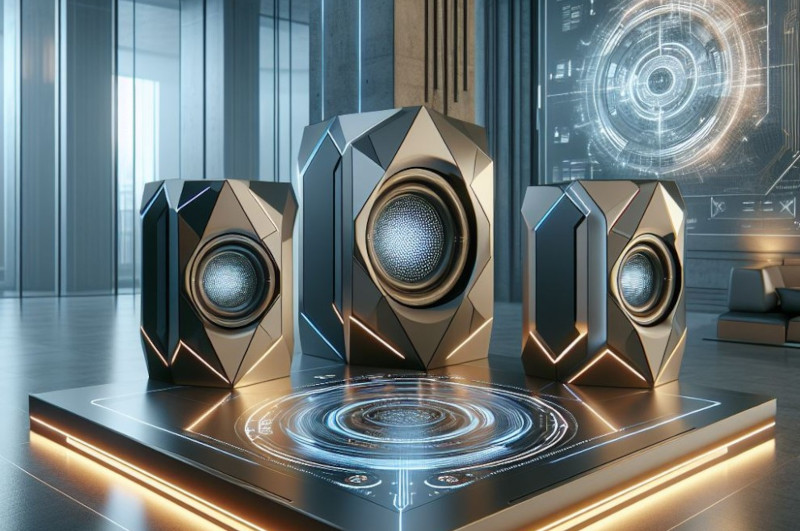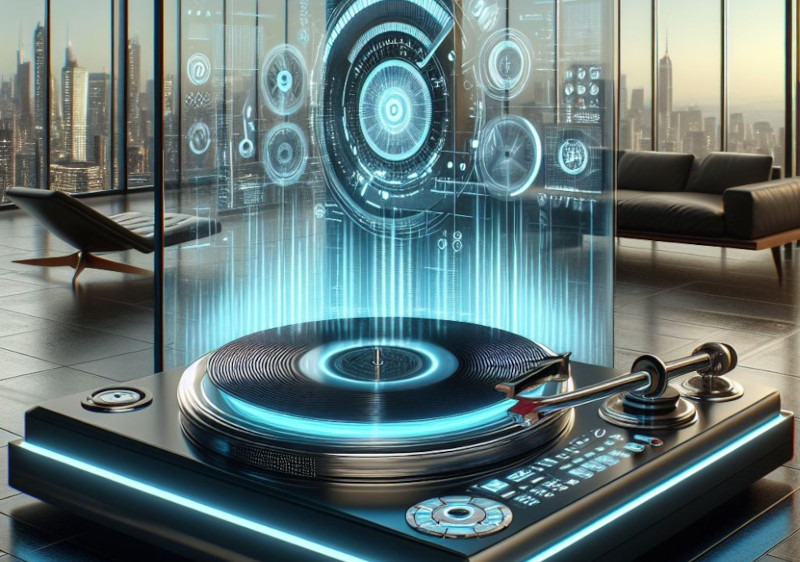Recollecting the future
In 1969 tube recording gear in Abbey Road studios was replaced by solid state devices. There were complaints of The Beatles recording team about how the sound altered for worse, for less natural. Fifty years later we still argue about the very same issue. Now lay down. Relax. Close your eyes...Try to imagine the world how it will look like in, say, 20 years from now. What technologies will we use? How far will we travel and how? What hi-fi devices will we have at our homes?

The principal error we make in imagining the future is that we all have the tendency to take the present as a starting point and then add new technologies we wish to have. We focus on products and latest developments and so we tend to over-technologize the future. More importantly, we tend to totally overlook the past.
Days of future past
Tonight I will be meeting friends in a restaurant (tavernas have existed for at least 25 centuries). I will be walking there wearing shoes hardly different from those worn 5,300 years ago by the mummified man discovered in a glacier in the Austrian Alps. At the restaurant, I will be using silverware, a Mesopotamian technology, which qualifies as a “killer application” given what it allows me to do to the leg of lamb, such as tear it apart while sparing my fingers from burns. I will be drinking wine, a liquid that has been in use for at least six millennia. [...] After the main course, I will have a somewhat younger technology, artisanal cheese, paying higher prices for those that have not changed in their preparation for several centuries.
Had someone in 1950 predicted such a minor gathering, he would have imagined something quite different. So, thank God, I will not be dressed in a shiny synthetic space-style suit, consuming nutritionally optimized pills while communicating with my dinner peers by means of screens. [...] The food will be prepared using a very archaic technology (fire), with the aid of kitchen tools and implements that have not changed since the Romans (except in the quality of some of the metals used). I will be sitting on an (at least) three-thousand-year-old device commonly known as the chair (which will be, if anything, less ornate that its majestic Egyptian ancestor). And I will be not be travelling to the restaurant with the aid of a flying motorcycle. I will be walking or, if late, using a cab from a century-old technology, driven by an immigrant.
The above thoughts are taken from the book Antifragile by Nassim Nicholas Taleb, Random House, Inc. If you stop for a moment and think about it, you inevitably start seeing the latest killer apps for your killer iPhone from totally different perspective. It is very likely that no one will use iPhone 10 years from now – though we will continue using phones for sure and majority of them will be wired, not wireless.

The digital future
It looks perfectly natural from today’s perspective that the future of audio will be entirely digital. Why it should be? Because it is a hype of last few years? The compact disc technology has been around for 35 years and it have not sonically outperformed the should-be-dead-already vinyl medium. In 1969 tube recording gear in Abbey Road studios was replaced by solid state devices. There were complaints of The Beatles recording team about how the sound altered for worse, for less natural. Fifty years later we still argue about the very same issue.
When MP3 format appeared many music lovers transferred their music onto hard discs and sold their CD collections only to end up totally devastated couple of years later with the lousy sounding files. Today an audiophile becomes computer audiophile, he streams his music from remote libraries, places his tablet or laptop onto spikes and searches for DSD encoded high definition music that has been transferred from PCM files. But it is so technologic, is it?
Recently I have come across an interview that was given to Dutch Music and Emotion magazine (07/2014) by the management team of Accuphase – the chairman Jim S. Saito, Marketing Manager Tatsuki Tozuka, Vice-President and Chief-engineer Mark M. Suzuki and Yasumasa Ishizuka, the Head of European distribution.
What is the point? Although Accuphase definitively is an innovative company that is working hard on improving existing audio technologies, viewing it from the perspective of today’s demand they sleep and do not keep up with the latest technological advancements.
The replies from the Accuphase team to inevitable questions about Streaming Audio, USB DACs and switching amplifiers are remarkable in sharing the same point of view with Nassim Nicholas Taleb - I feel noteworthy to check them out.

Streaming Audio
“Accuphase keeps its eyes and ears open for every development that appears to be more than a fleeting trend. If such a development appears to be a durable and high-quality platform as well, our next step is to start a series of feasibility studies. What we want to avoid at all cost is that we start an expensive and time-consuming development process when such a new invention or unstable platform can still die before it’s time. Because we maintain this careful policy, Accuphase will never be at the forefront of trendy developments. It’s not that we don’t want to do this by definition, but we do find it necessary to research the feasibility and viability of such a platform. [...]
As far as Streaming Audio is concerned: we see the potential for growth, but we have also concluded that there are still a lot of bridges to pass. There are simply not enough parameters that have been laid down in applicable standards. As far as we are concerned, the development of Streaming Audio still leaves too much to be desired to meet our standards, so we will not start such a costly process yet. Besides that, there is still a lot of legitimacy for existing physical media, both in Asia and other parts of the world, so we unabatedly continue to improve those. Even today, these media have not yet reached the peak of their performance and we believe that they still sound better than what we have heard from Streaming-Audio solutions.”
The USB support
(Note: the latest Accuphase’s CD and SACD players and digital processors are USB compatible so the company is not a total rejector).
“The fact that we do not build a Streaming Audio device of our own does not mean that we want to boycot a development that is already in use, even expanding. On the contrary. Beneath the surface, our players have worked with a high-resolution internal data-signal for many years now, so at first it looked like a relatively small step to implement external data as well. But this turned out to be much harder to do than I expected. For internal data, we can use our own transports that generate a very accurate data stream. But when you use external data sources, that are usually much less precise, you run into a mountain of trouble. For some time it even looked like we would be unable to clean up the external data enough to get real Accuphase quality at the end of the process. That would have been a legitimate reason not to provide this service, but fortunately we pulled it off just in time. So there you have it: a small glance into the possible future of Accuphase Streaming Audio. [...]
But for now, there are still too many bumps in the road, mainly concerning standardization and support. So for us, the signal to release our own Streaming Audio products is still on Red.”

On Class-D amplifiers
“Class D is not strange to us. In fact, in the past we have built the 6-channel PX-650 amp that used this technology, but we stopped using Class-D technology shortly after that. The main problem of Class-D, even today, is the relatively high noise-floor caused by the relatively low carrier-frequency. That carrier-frequency is inherent to this technology and it always gives you more distortion and a certain unrest in your playback, compared to a well-designed conventional circuit. Everyone who is given the opportunity to compare to a Class D circuit and a conventional circuit in a well-prepared and conscientiously preformed listening test will hear the differences immediately. Especially with our newest generation of conventionally-designed components, we have taken another big step on the path towards truly realistic playback. Because we have been able to lower the noise-floor with every new generation, the music gets a truly breathtaking sense of softness and realism.”
Remembering The Future
Well, now you probably know what is the future of high-end audio like? Let’s not expect breakthroughs – the sound of animal skins on hollow trees has been never made in binary code and the beautiful sound of the friction between sheep intestines and horse hair has never been outperformed by a synthesizer (though the opposite was forecast 40 years ago). Stay with your glass of wine in an armchair by the fireplace listening to your old-fashioned gear – it is unlikely that the next fifty years will make any difference..
(C) Audiodrom 2015



